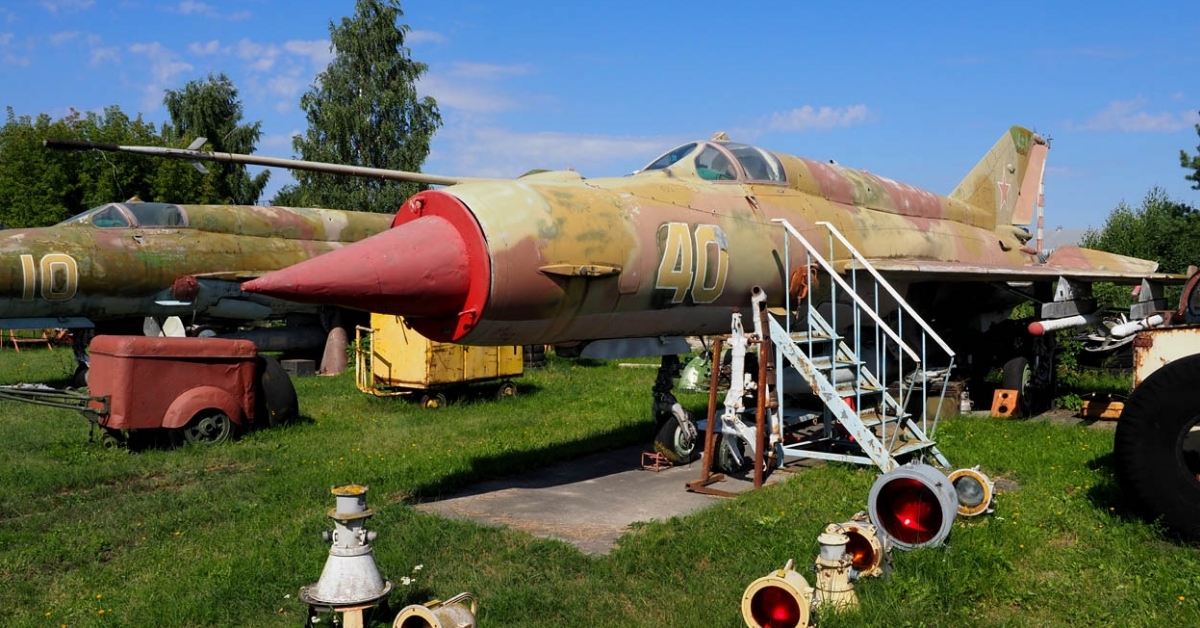Spilve Airport Riga in Latvia offers a perfect pairing of two Soviet military aviation and tourist attractions for visitors.
Easily reachable from the city centre one venue is located at the modern main international airport and the second is at the former main airport called Spilve.
Both offer an insight into the world of military aviation from the time of the Tsars right up until Latvia gained their freedom in the ‘singing revolution’ period of 1987-1991.
The time in the early 90’s when the three countries of Latvia, Estonia and Lithuania won their independence from Russia.
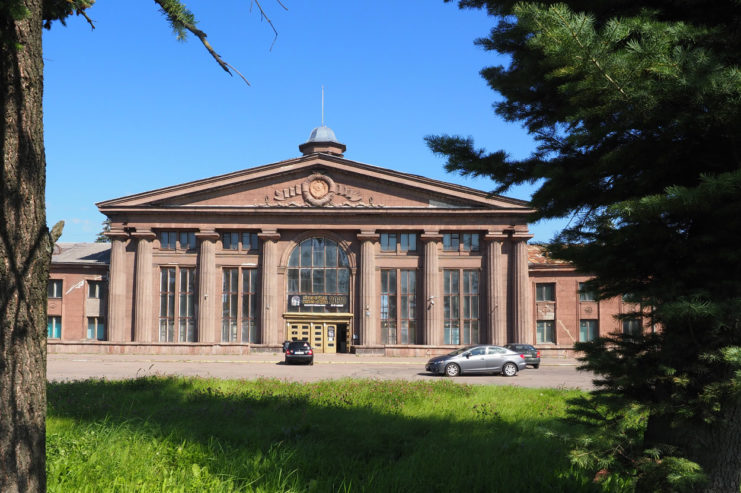
However, nationalist songs and an unbroken line of people along the length the three countries holding hands tipped the balance and they all got freedom through a series of such peaceful protests.
Currently the Historic Aviation Museum is situated in walking distance right next to the departures and arrivals building at Riga International Airport. Open Sat/Sun 10am/4pm (worth making an appointment at other times)
An eclectic collection of Soviet period planes, machines and aviation related material are on show at the 2 acre site.
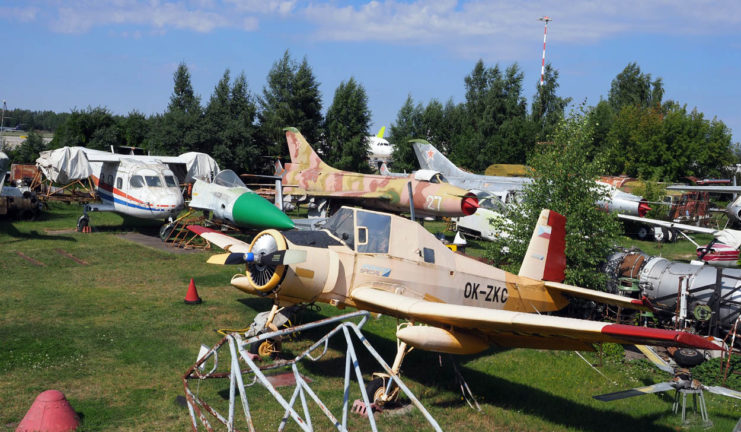
On arrival at the airport its hard not to see the massive M1 Russian troop carrier helicopter. That in its day could whisk up to 90 soldiers around the USSR or around their battle fields.
Early MIGS, Antanovs and Sukhoi aircraft sometimes of several different marks of each are on show too.
The private collection is run by father and son team Victors and Pavels. It costs €7 to tour the display and well worth it too.
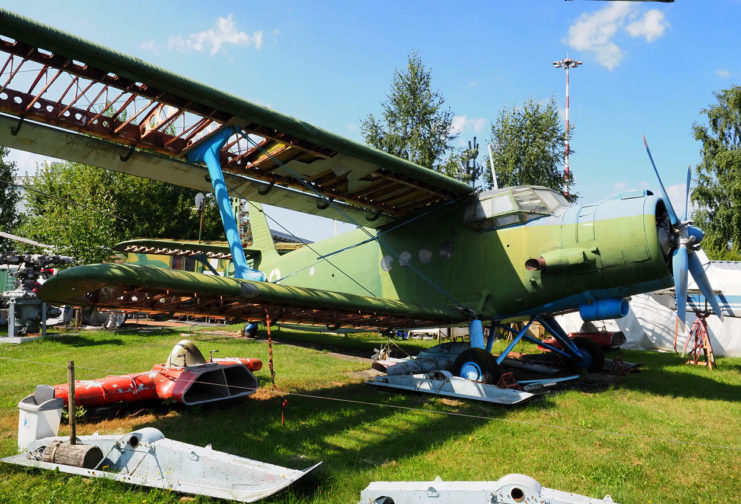
Quite rare items like a Russian copy of an early British Gloster Meteor ‘Derwent’ engine was in storage.
A ballistic missile carrier vehicle adapted to be used as a fire truck. A forest of rocket pods stood proudly in front of an early MIG-15 fighter behind.
Using twin coaxial-rotors a Kamov Ka-26 utility helicopter referred to by NATO as a ‘Hoodlum’. Which is an unusual example to see on show.
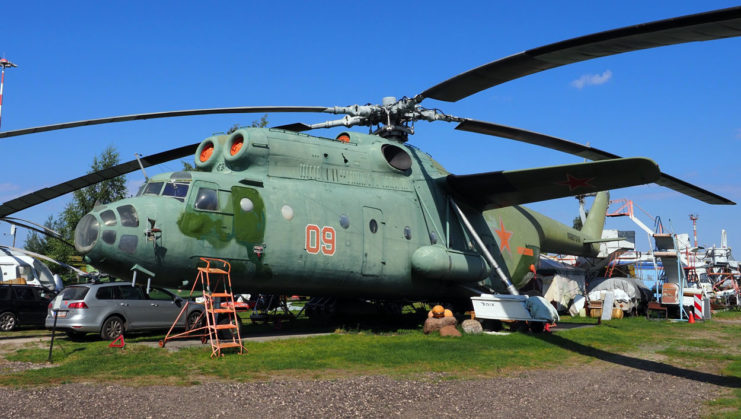
An early version of an Antonov A2 biplane, 19,000 of which were manufactured in all. A utility type aircraft that can take off and land from the roughest of strips and can carry around 10 soldiers. There are many still flying today for civil use. Its short take-off and landing ability are well regarded by pilots.
One plane not yet in the exhibition is a Tupolev Tu-22M3 or NATO Backfire-C swing wing bomber that they have had to park in the airport itself, as they have run out of room.
This version does have a nose refueling probe fitted. The plane can be viewed from the passenger’s departure or arrivals area and is located on the far side of the main runway.
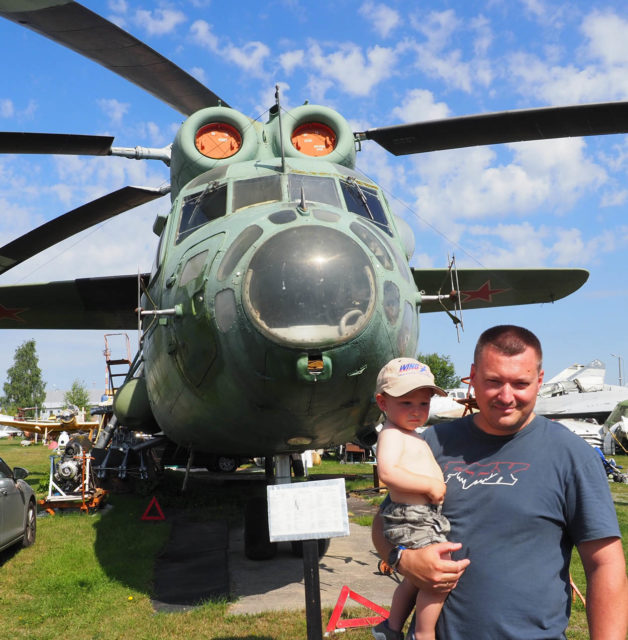
The former Spilve Airport building in Riga provides an insight into Latvia and the period under Soviet rule.
Via a building completed at the end of the Stalinist rule, is one of the rare buildings in Latvia where the hammer and sickle icons can still be seen today.
The heavy red stone edifice, typical of the Soviet epoch, was completed in 1954 a year after the death of Stalin. Then it was called Riga’s Central Airport building.

Giant murals bedeck the walls, all portraying the delights of being under Soviet rule of that time.
This communist propaganda was to inspire those that would have flown in and out of what was then one of the busiest of airports in the western area of the USSR.
Although memories of this period are not regarded by the Latvians as being precious. However, the building itself is protected and is an example of a type of rare architecture certainly in Latvia and worth preserving.
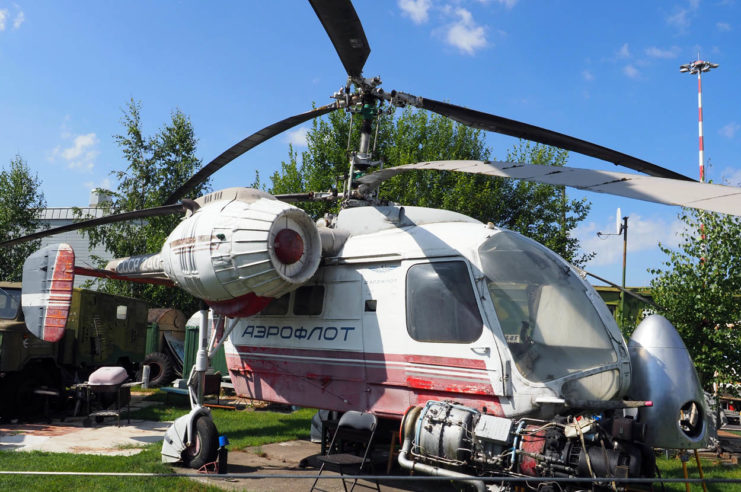
The plain red stone exterior gives way to a colourful grand entrance hall. A huge mural showing Latvians in their national dress carrying red Soviet flags is unmissable as you enter.
Another shows a delightful workers holiday beach scene. Another a key bridge over the Daugava River which is very important to all Latvians.
The many painted columns and the roof are a sight to behold. Sometimes referred to as wedding cake style. Embossed blue and white star emblems covering the whole thing.
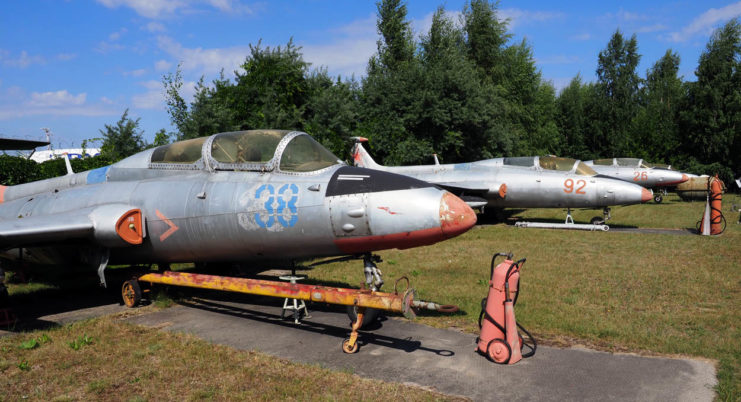
Soviet signage also points to places like baggage gate. Signs on the outside of the airside of the building proclaim the city name of Riga. And, are in both Latvian and Russian.
Flights were operated at different times by the Nazi Lufthansa and Soviet Aeroflot. After the Second World War the airport became the hub of Aeroflot.
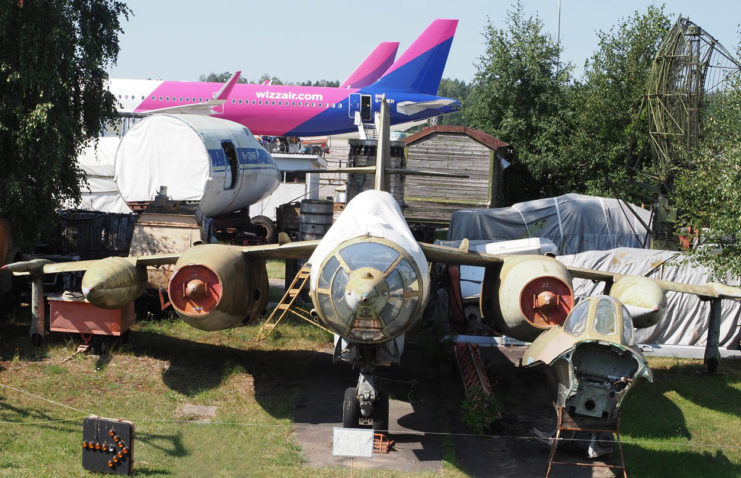
Routes flown from Riga were to places like Moscow (Russia), Warsaw (Poland), Tallinn (Estonia), Kaunas (Lithuania), Liepaja (Latvia) and Daugavpils (Latvia).
The airport itself began life during the period of the First World War when Tsarist aircraft used the meadows in the fight against the Germans in 1916.
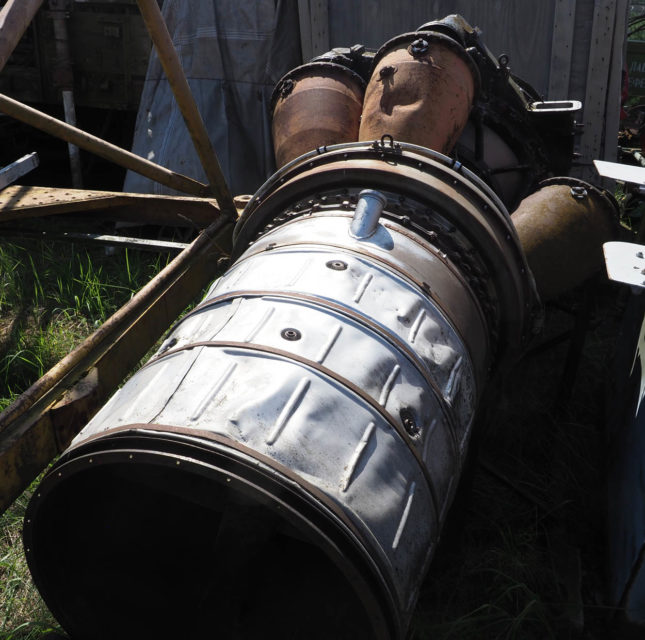
More photos…
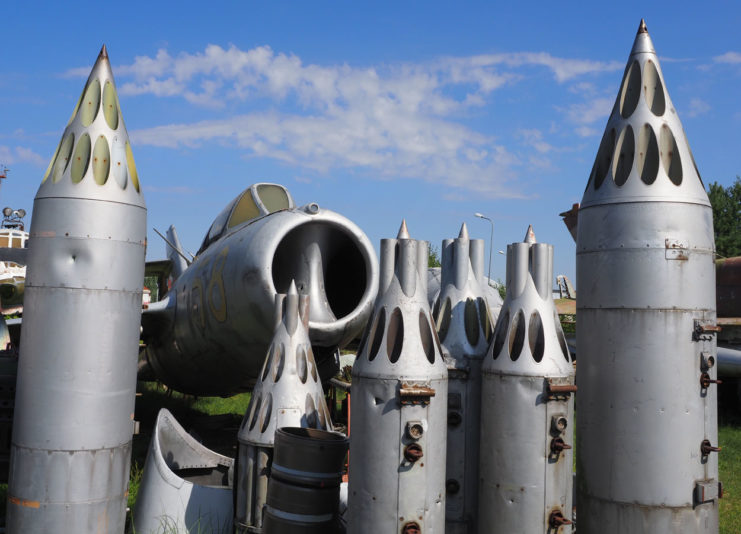
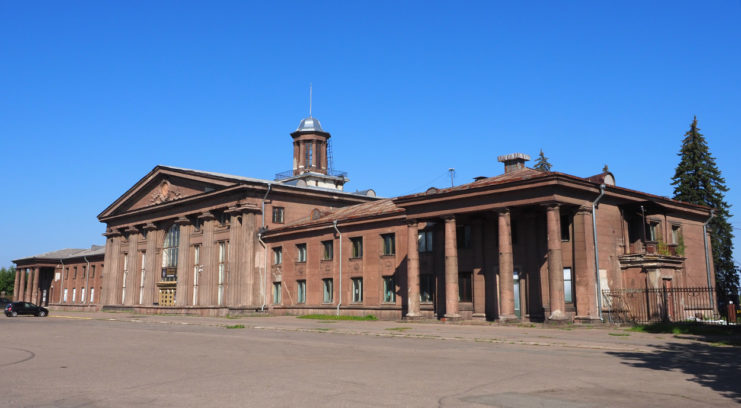
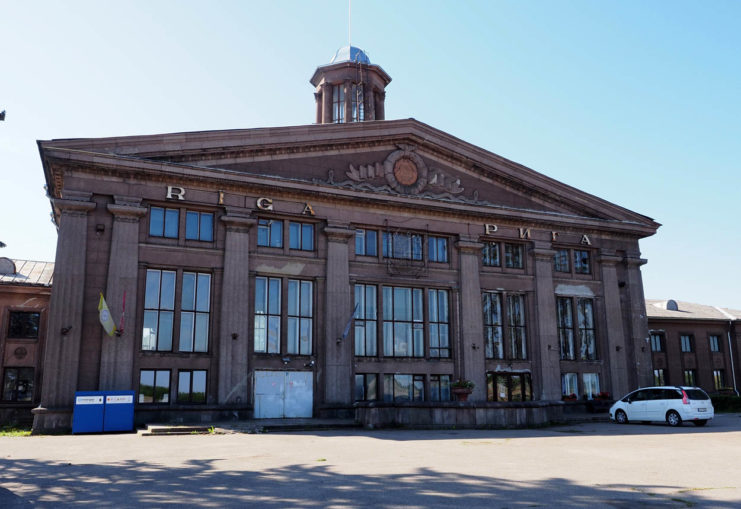
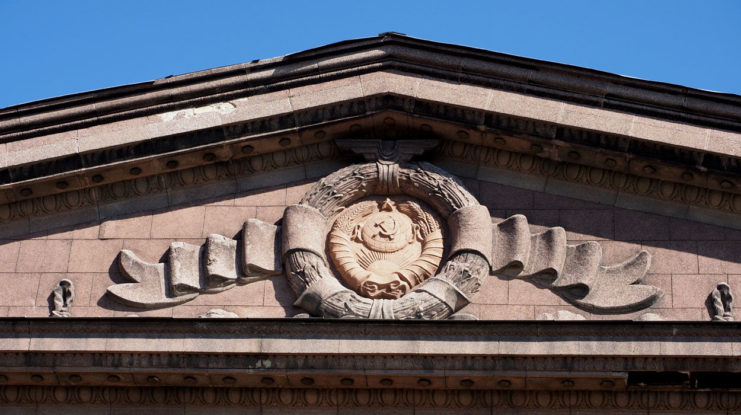
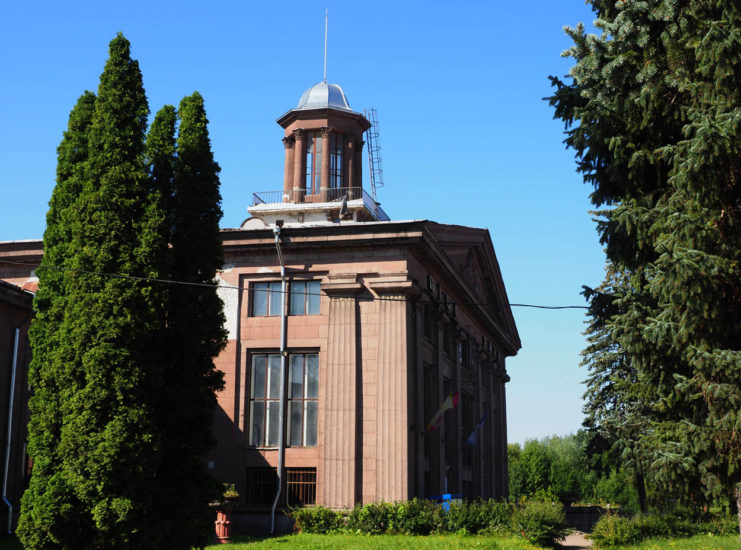
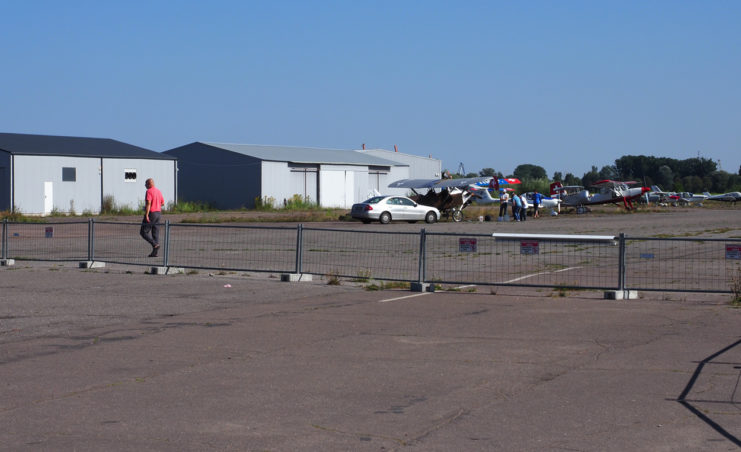
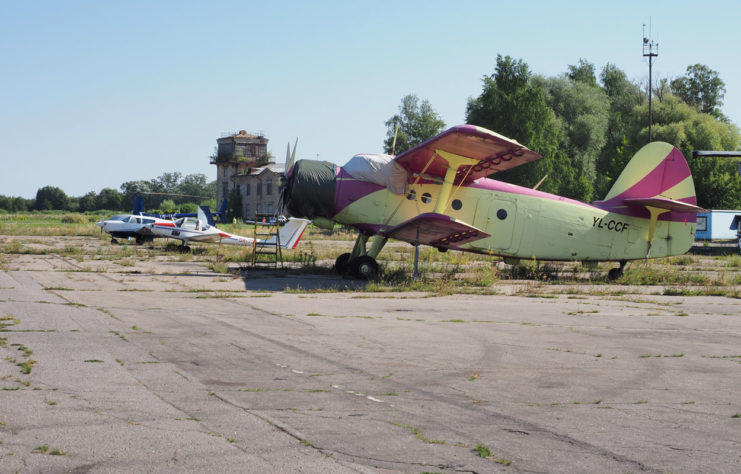
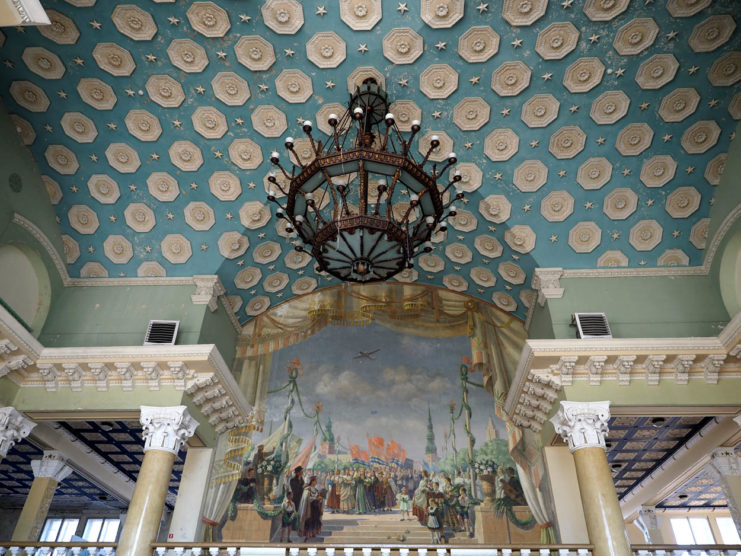
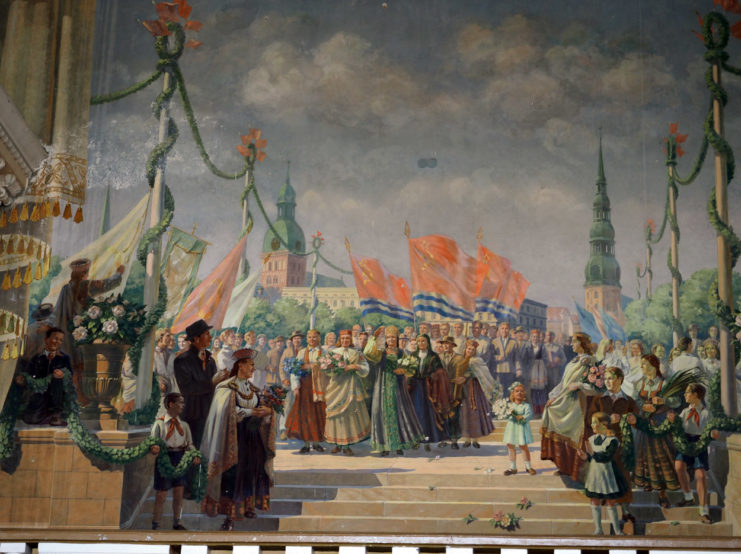
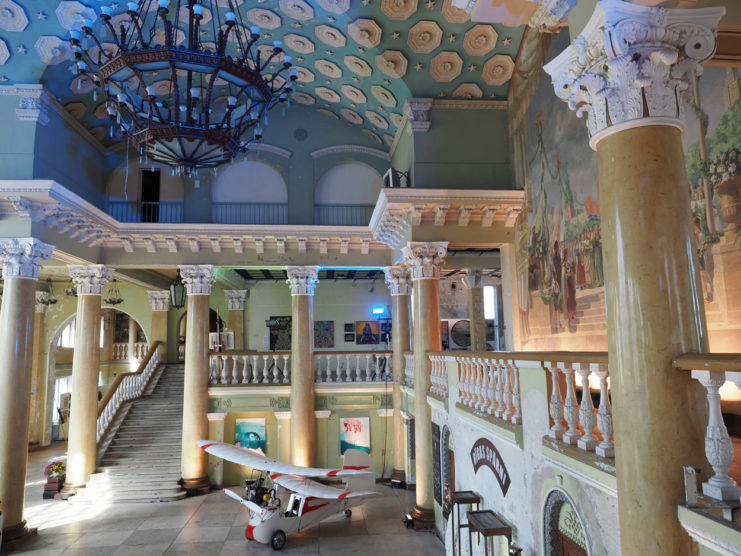
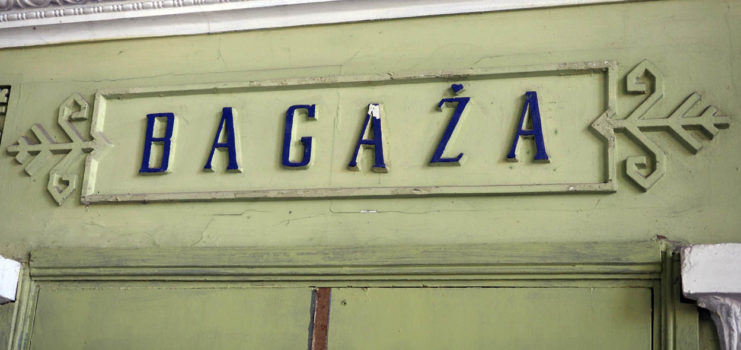
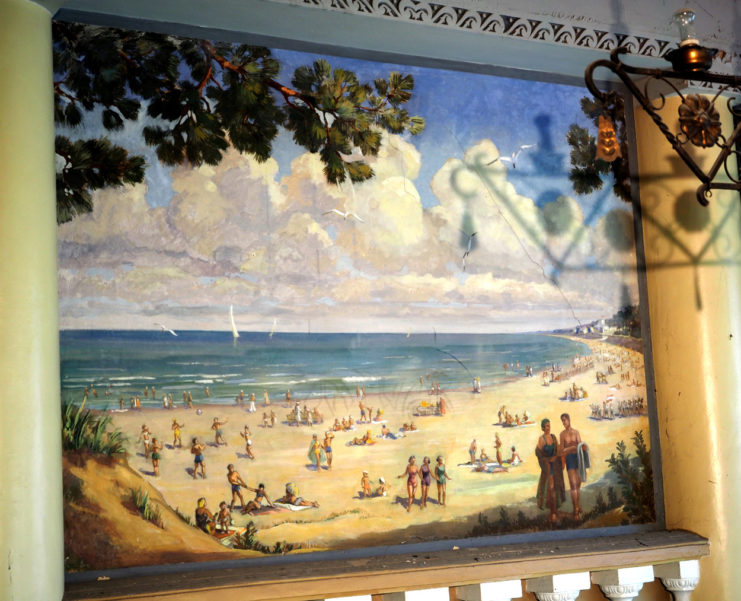
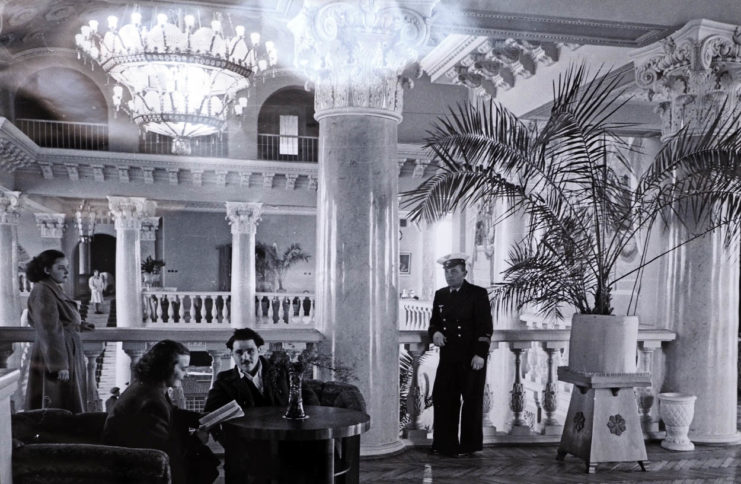
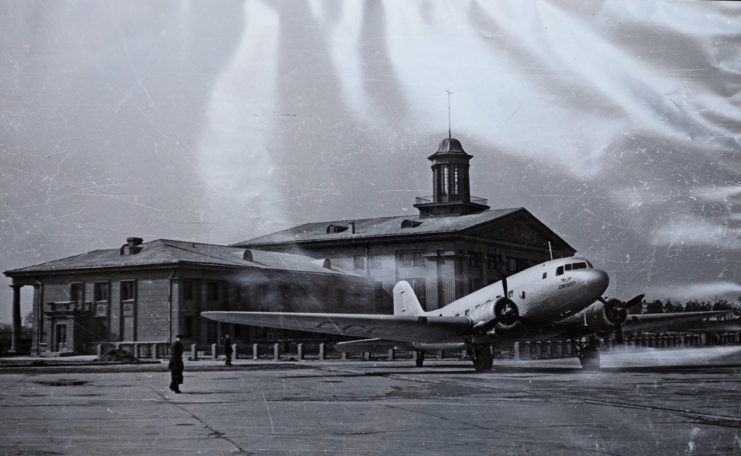
Civil light planes still use the runway and some of the old hangers. A flying school operates from there and many aviation enthusiasts use the hard standings to store their planes.
Another Article From Us: Fantastic News! Wheatcroft Collection’s S130 – The Last Survivor Has New Home
Today the former Spilve Airport building is used on occasions for music events or as a temporary arts space.
Words and pictures by:
Geoff Moore www.thetraveltrunk.net
